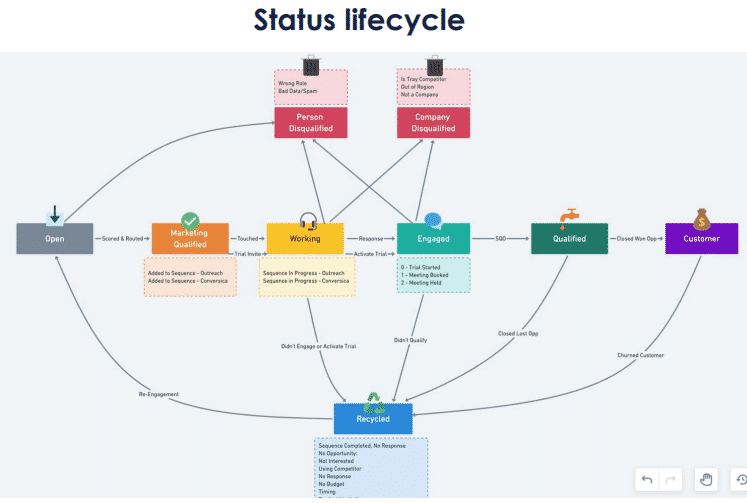Gone are the days where traditional marketing fought on an even playing field with digital. The acceleration of technological growth, spurred on by the pandemic, has transformed campaigns and the ways brands generate leads.
“We truly live in a world where marketing and technology have become inseparable concepts,” said Lyola Rowe, Growth Marketing Manager at Tray.io, in her session at our MarTech conference. “Marketers have been becoming so much more tech-savvy.”
Yet this increase in technology use has made it difficult to understand lead lifecycles. According to Rowe, it’s very common to see over 50 apps in the marketing tech stack, which can often disrupt lead generation if not they’re not properly connected.
Marketers can address these disruptions by using automation to connect these technologies, gaining a full view of lead lifecycles. Here’s how Rowe recommends tackling these challenges using lead staus tracking.
Develop a lead status framework
Marketers need a way to discern which lead statuses match with each prospect, which is why developing a framework is vital.
“A lead status framework will allow you to dig deeper than MQL and SQL,” said Rowe, “and answer questions specific to your business sales processes.”
These questions — those related to the lead funnel or prospect actions — can serve as the foundation of your framework. Marketers should identify which of these they want to be answered and then use them as categories going forward.
“By setting up these additional categories of your funnel, you’ll be able to get deeper, more granular visibility into your funnel and have so much more data available to you,” Rowe said. ” You’ll have that data at your fingertips to use in personalized campaigns.”

Identify lead statuses
Once you’ve constructed a framework, you can begin analyzing leads and placing them into your status categories. Rowe recommends limiting recorded statuses so you don’t become overwhelmed.
“You will find a whole spectrum of lead statuses and it doesn’t mean that you know you need to think about incorporating all them into your process,” said Rowe. “Start simple, ask questions.”
She added, “What else do you want to be able to track in addition to your standard lead stages or standard opportunity stages, you can define additional statuses and build from there.”

Identifying lead statuses allows marketers to construct models of their lifecycles (see the above image). They can then place this data into automated systems, which can help streamline your lead nurturing and generation efforts.
Automate lead status changes
“Once you automate your lead status model, you’ll be able to kind of keep track of where this automation happens, how you made it work.”
Rowe described her company’s automation process and its focus on workflows: “We’re using what we call ‘callable workflows,’ which are workflows that are linked to each other, and so they connect and pass data, and we’re tracking event changes.”
The automation in this system should make your marketing operations easier. Rowe recommends marketers listen for events taking place in their RevOps processes and send this data to their workflow automation systems. This can help remove the confusion in your lead lifecycle tracking.
“You can think about what apps you have in your business and then which activities you can track,” said Rowe. “Then pump that data into your CRM.”
She added, “Make it easy to use with no room for confusion.”
Watch the full presentation from our MarTech conference here (free registration required).
The post 3 ways to gain more visibility into your lead lifecycle appeared first on MarTech.

0 Comments